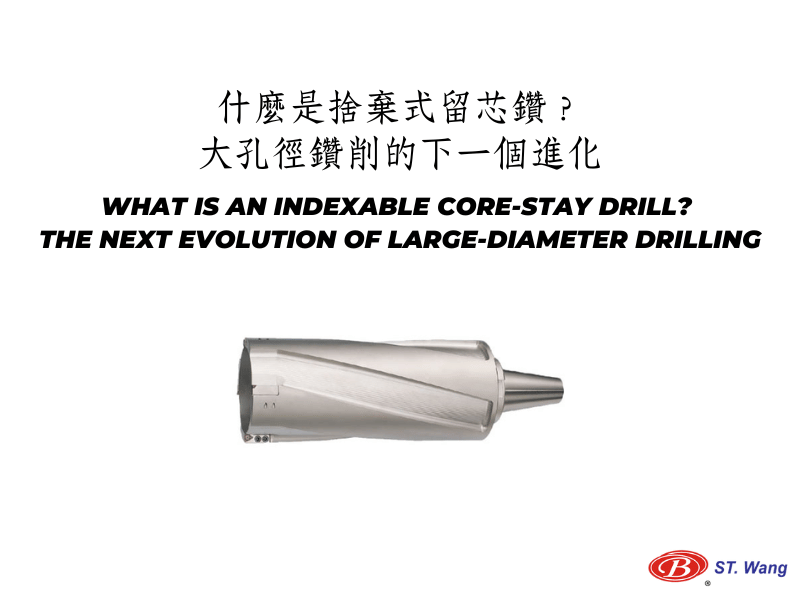Machining has always been about speed, precision and dependability, but in today’s highly competitive manufacturing world efficiency is paramount. When you make components for the aerospace industry, automotive components or high-tech products, the tools that you select directly impact your bottomline. The indexable drill, the high-speed drill, threading tools all make a difference.

Image credit: stwang-tw.com
These aren’t just updates to older software. These tools offer a better method of working, since they can reduce the time spent in downtime and expenses and produce superior outcomes. We’ll look at how they can assist manufacturers to drill more quickly, cut better and finish quicker.
Indexable Drills: More Holes, Less Hassle
In the past, drilling large holes was costly and time-consuming. Drills made of solid material were slow to wear out, demanded sharpening, and frequently slowed down production lines. This is why more and more machine operators are using indexable drills. You can change inserts and not replace the entire tool when it becomes dull.
Indexable drills are known for their high efficiency. These drills are designed for heavy-duty performance and extended runs. They also require very little maintenance. It is possible to reduce loss, keep your tool inventory at a minimum, and prolong the life of your tools through the use of interchangeable inserts. SHANG TZANG WANG ENTERPRISE, CO., LTD offers disposable core-stays that provide constant performance for large-diameter machines. For shops doing repeated hole machining this upgrade can help save hours of downtime every week.
High Speed Drills – Designed to meet the needs of today’s customers
In a work context where speed is crucial, high-speed drills allow you to get the job done quickly and without losing the precision. These drills are great for products that have high resistance and rapid cycles. They’re employed in everything from precision medical components to large-volume automotive components.
Modern high-speed drilling machines feature cutting-edge coatings as well as optimized flute designs to reduce heat and friction, and extend the life of tools. This means less change of tools more break-free, and increased production. For any machinist who’s felt the frustration of a broken drill mid-cycle, switching to a high speed drill can feel like a revelation.
Tungsten Carbide End Mills: Reliable Performance Cut After Cut
When it comes milling, tungsten carbid end mills are the most reliable tool on the shop floor. End mills’ toughness and resistance to heat make them an ideal option for cutting through tough materials. Whether you’re roughing out large sections or finishing edges, these machines give consistently good results that you can trust.
Their flexibility is what makes the tungsten carbide end mills unique. With various flute counts, helix angles and coatings, they are able to be adapted to a broad range of projects from titanium to aluminum. For those who require accuracy and toughness, carbide-based end mills offer the perfect combination of aggressive material removal as well as clean surface finishes.
Threading Inserts: Tiny Tools, Big Impact
The creation of threads can seem like just a small aspect of the process, but it’s actually one of the most vital. A poorly-crafted thread can damage an excellent part. A high-quality insert is important. These small, interchangeable tools are made to cut threads on the outside or inside of the nut, with precision and consistency.
In contrast to traditional taps and tools that wear unevenly threading inserts give steady results across many cycles. The tool can be adjusted to the next cutting point if one of the edges is dull. It’s not necessary to take it out or restart. It’s a fast efficient, cost-effective, and simple method to accomplish it. The reliability of threading inserts is also crucial to machine builders. An appropriate insert will ensure that your threads fit flawlessly from the very first time. There is no need for rework or second passes.
The Bottom Line
In modern machine machining, time is a precious resource that which you cannot afford to lose. Today’s most efficient shops have moved to more sophisticated tooling systems that are more flexible. The cutting tools aren’t just more precise, but they also make workflows easier and minimize changes, in addition to extending time-to-use of the equipment. The result? The outcome? Less time spent on troubleshooting and more time is spent on producing precision parts. In a market where greater demand and a tighter margin are commonplace tools that perform more effectively give companies the competitive edge.